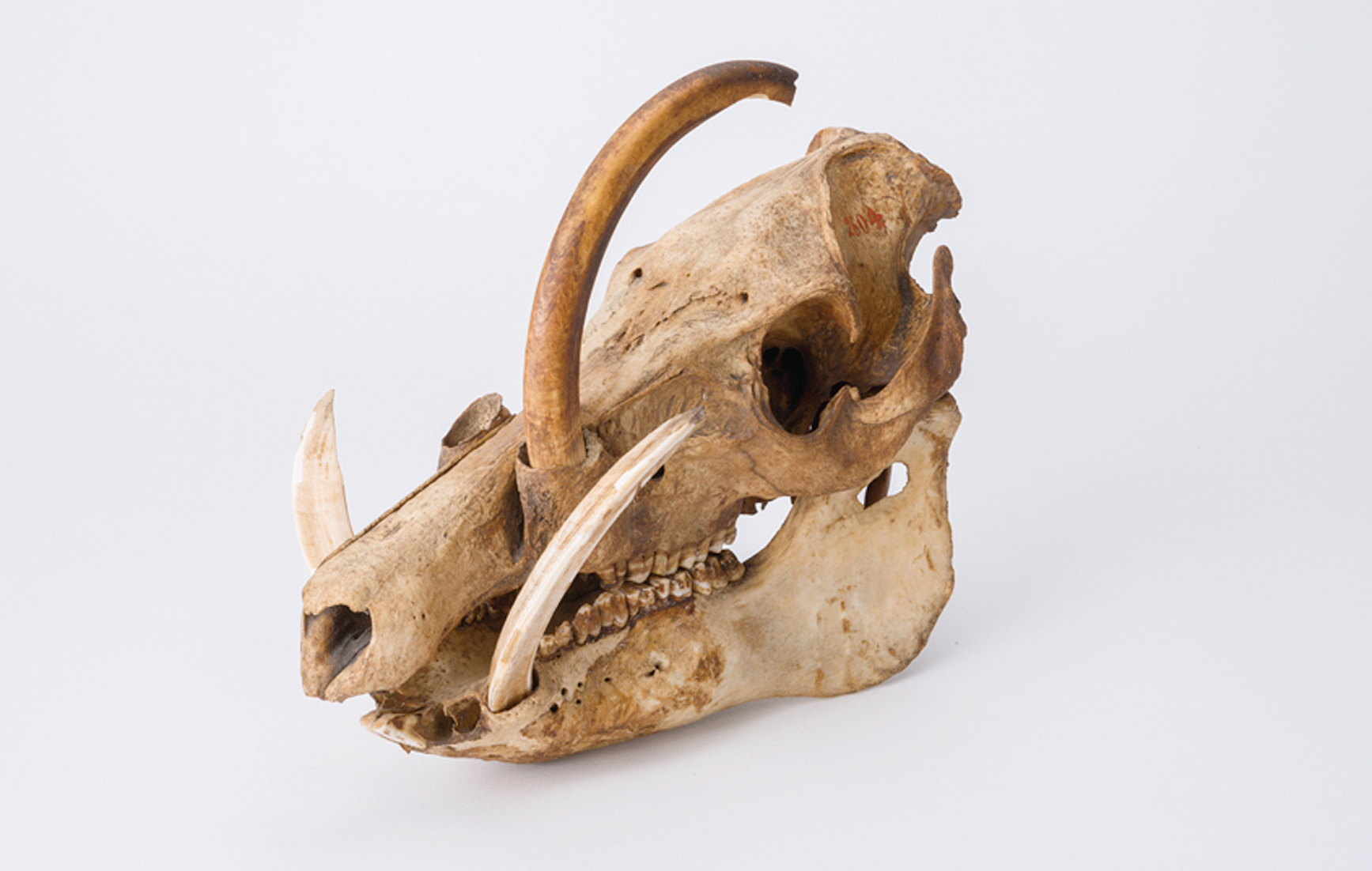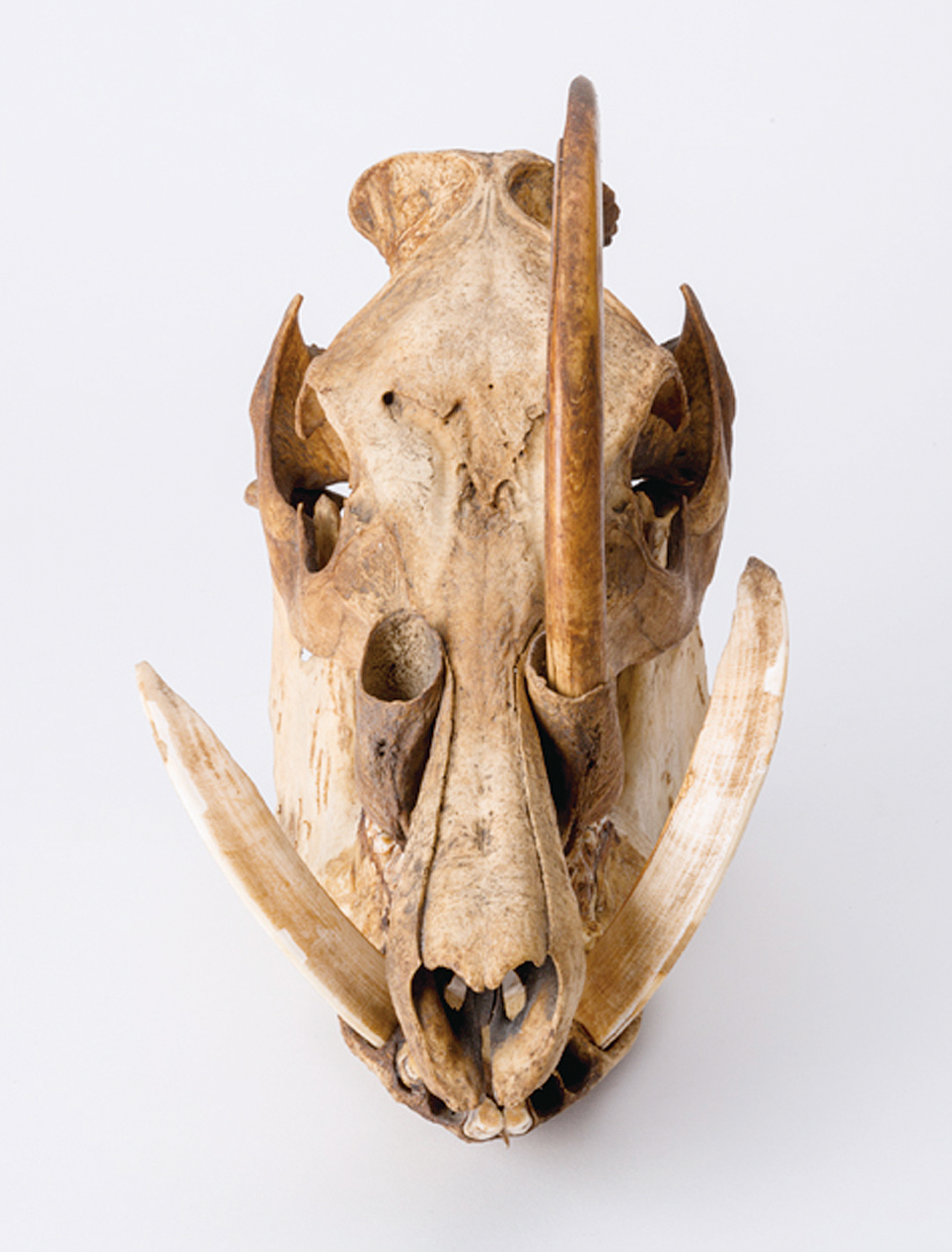B27
Skull of Babirusa
Babirusa is a mammal of Suidae distributed only in islands around Sulawesi of Indonesia. It weighs about 80 kg. Its canines (tusks) extraordinarily develop and this species is famous for its strange external shape. Upper and lower pairs of curved canines continue to grow longer. When the animal is alive, the canines of the upper jaw pass also through the softparts around the mouth. The curved canines are elongated in front area of the face and eyes and the tip reaches the head surface in old individuals. Because these appear to pierce the skull, the babirusa is called "Animal staring its death". In Indonesian language, Babi (babi) means the pig, and Lusa (roesa) indicates the deer. The long canines traditionally have reminded the local people of the antlers of the male deer. Exceptionally in Suidae species, babirusa has smaller litter size. Because of the destruction of forests, the babirusa is disappearing. This specimen is one of the animal specimens that Dr. Yoshikiyo Koganei of Faculty of Medicine, the University of Tokyo started to collect. Detailed history of this specimen has been unknown, but it has been recorded that Dr. Yoshikiyo Koganei was handed the skull from a trading company in August 1917. This specimen was collected as a valuable specimen of comparative morphology in the Faculty of Medicine by Dr. Yoshikiyo Koganei who had established the anatomy, morphology and anthropology in Japan. We suggest that cranium and mandible may belong to the two different individuals, but, these have been stored as one specimen. Although the skull and teeth are partially broken, this specimen is a rare specimen of babirusa that has recorded the history of zoological anatomy in Japan. (Hideki Endo & Mayu Kusumi)
References
遠藤秀紀(2002)『哺乳類の進化』東京大学出版会。


